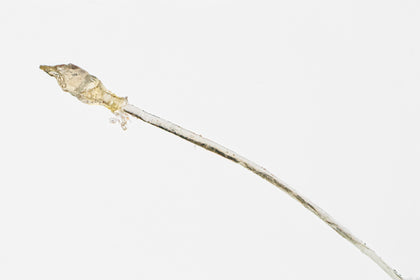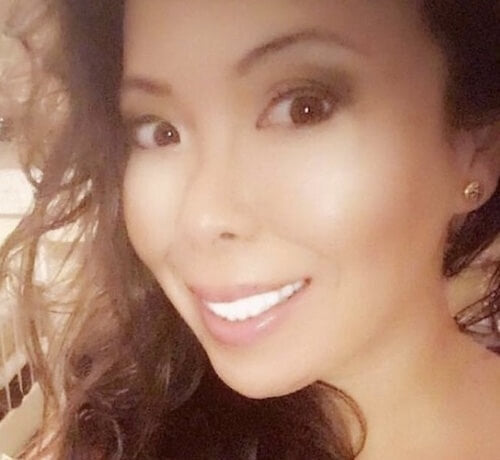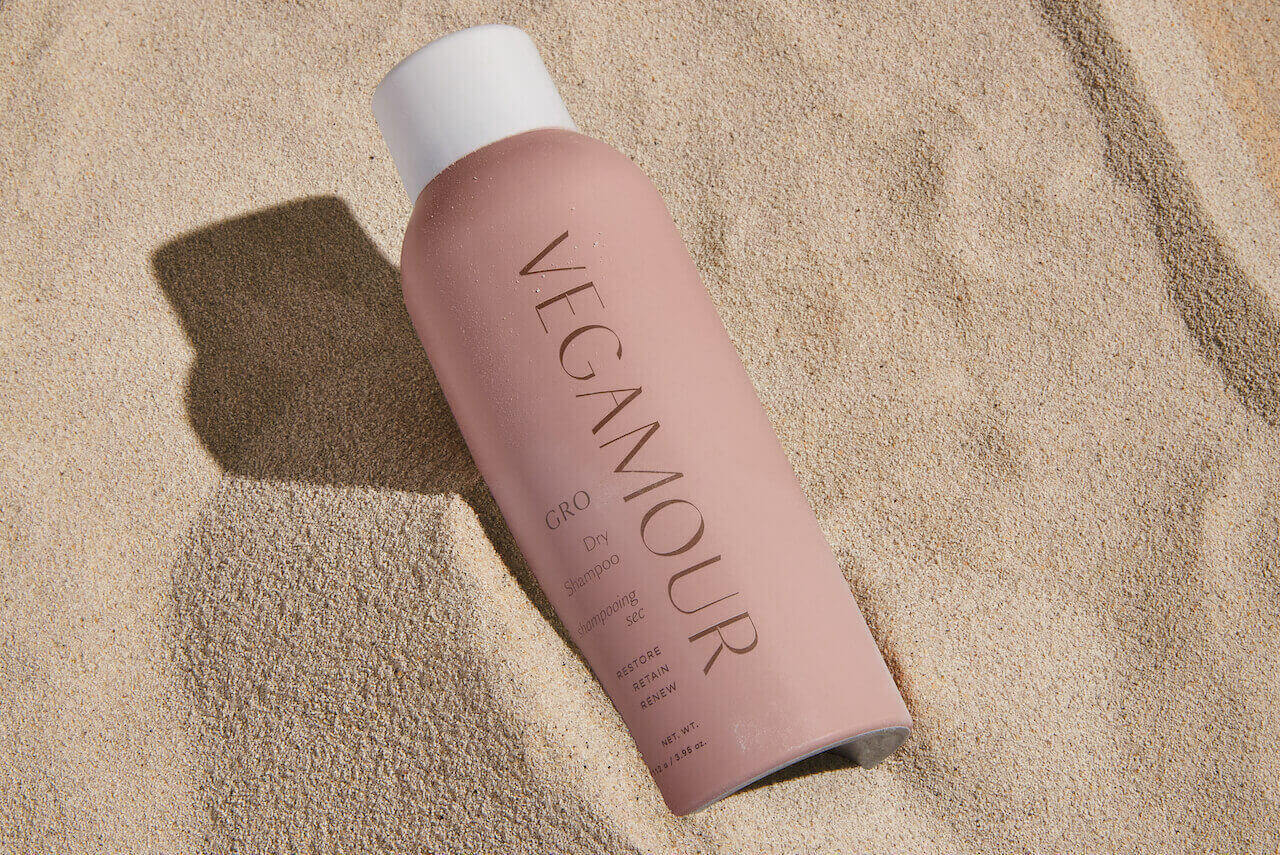You've been diligent with your hair care routine — yet, you're still losing hair. Not only that, but you've recently started to notice that some hair strands seem to have a white bulb attached to their ends.
Wondering what exactly is going on? Find out what a white bulb at end of hair means according to the experts, plus discover what products you can use to support healthier, fuller looking hair.
Here's Why Your Hair Sheds
If you see extra hair in your brush or the shower drain, seemingly out of nowhere, don't worry just yet! While it can sound your internal alarm, it's typically not a cause for concern.
Rather, it's a completely normal occurrence to shed hair every day. The average person sheds approximately 50-100 hairs a day, according to the American Academy of Dermatology. Although that may sound like a lot, it's really not that much considering there are approximately 100,000 hair follicles on your head.
Read More: How Much Hair Loss is Normal?
What Is the White Bulb at the End of Hair?
Spotting a white bulb at the end of the hair is usually not a sign of something serious. Instead, a white bulb is a natural part of the hair growth process. According to experts, it's unlikely to be an indicator of deeper issues such as male pattern baldness, stress-related telogen effluvium hair loss or another more permanent form of hair loss.
"The white bulb at the end of the hair is keratin (or protein) and is the same keratin that makes up your skin and nails. A white bulb is not indicative of hair loss," said stylist Carrie Capalbo of Salon YOSHIKO. "It's part of the lining of the hair follicles. When you see a white bulb at the end of a strand, this is your hair shedding from the hair root, which is within the normal cycle."
How the Hair Growth Cycle Works
Hair falling out is just one part of the hair growth cycle. To better understand what's happening, here's a rundown of the different phases within the complete hair growth cycle:
- Anagen Phase: The anagen phase is the growth phase. Newly formed anagen hairs push the old hair up and out of the hair follicle during this active hair growth phase. New anagen hair follicles will continue to grow for two to six years during this active phase.
- Catagen Phase: Your hair stops growing in the catagen phase. This transitional phase can last anywhere from 10 days to four months. About 1% of your hair is in this phase at any given time, meaning that "club hairs" are not actively growing. However, activity within the hair cells of the hair shaft keeps the club hair in the hair follicle and attached to your scalp.
- Telogen Phase: In the telogen phase, the body is preparing for the hair follicles to shed. At the same time, your body is actually getting ready to shed the hair and begin a new growth phase. The telogen hair resting phase lasts about three months.
- Exogen Phase: When hair falls out, this is part of the shedding phase known as the exogen phase, which only lasts a few days.
Read: How Fast Does Hair Actually Grow?
Why You're Seeing a White Bulb & What to Do About It
Now that you know how the hair growth cycle works, you can begin to understand how those little white bulbs end up on the bottom of each strand and how to care for your hair and scalp.
Keratin is the protein that makes up your hair, skin and nails, and is also what makes up the bulb at the end of the hair strand. You might observe that some are white bulbs, while other bulbs may match your natural hair color. White bulbs aren't actually white — they're unpigmented. This means they don’t contain melanin, the natural pigment that gives your hair its unique color.
"The coloring of the hair bulb is based on the melanin in your body," explained Capalbo. "This is no different from the melanin found in skin."
As we age, our bodies shift, including our hair. Hormonal changes that occur throughout life, as well as aging in general, all play a role in how our hair grows — or, on the flip side, doesn't grow. The amount of hair in the anagen phase, for example, declines as we age. Male pattern baldness and other hair thinning issues may potentially also occur later on in life.
"It’s important to know that as you age, your hair can change texture, color and shedding patterns," said Capalbo.
Wash Your Hair More Often
Infrequent washing of your hair can be another catalyst for an increase in shedding, particularly while brushing hair. The solution is to lather up more frequently or opt to use a dry shampoo that supports fuller looking hair on those days in-between washing. Remember to be gentle when brushing or combing.
"If you don’t wash your hair daily, you may see more shedding when you brush your hair in between washes," said Capalbo.
There's also the possibility that a bulb is connected with damage due to heat styling or chemical processes.
"A bulb at the end of the hair can also be related to erosion or breakage, most typically heat or chemical damage," said Jay Scott Jackson, master colorist and manager of New Jersey's NV Salon & Spa by Yajaira. "I recommended a trim, as these ends will not absorb product or behave the same as healthy hair."
When to See a Doctor
If you suddenly notice excess hair loss, it might be a sign of telogen effluvium hair loss. The good news is that telogen effluvium is typically temporary and triggered by extreme stress. Once the stressor has been resolved, the condition usually resolves itself. Remember that your hair can be indicative of your overall health and can show warning signs of issues such as nutritional deficiencies.
"White bulbs attached to the end of the hair strand are completely normal," said Capalbo. "However, if you're noticing excess shedding or excessive hair loss, more than you normally see, you may want to consult with your stylist first and then with your dermatologist for further analysis."
#include-related-slider#
Get Right to The Root of Hair Wellness
The best way to improve the health of your hair is to prioritize mindful habits on a daily basis. Things like maintaining a balanced diet, hydrating, minimizing stress and practicing regular self-care can make a big difference when it comes to your hair and overall health. Boost your hair wellness and your hair will look and feel better than ever!
MORE From VEGAMOUR
- Shop: Hair Wellness Products for Thinning Hair
- What is Telogen Effluvium? One Type of Hair Loss Explained
- Scalp Irritation and Hair Loss: Is There a Connection?
- Experiencing Sore Scalp and Hair Loss? Here's What You Should Know
- How This Influencer Tackled Postpartum Hair Challenges
Photo credit: Peter Vahlersvik/iStock
Back




















